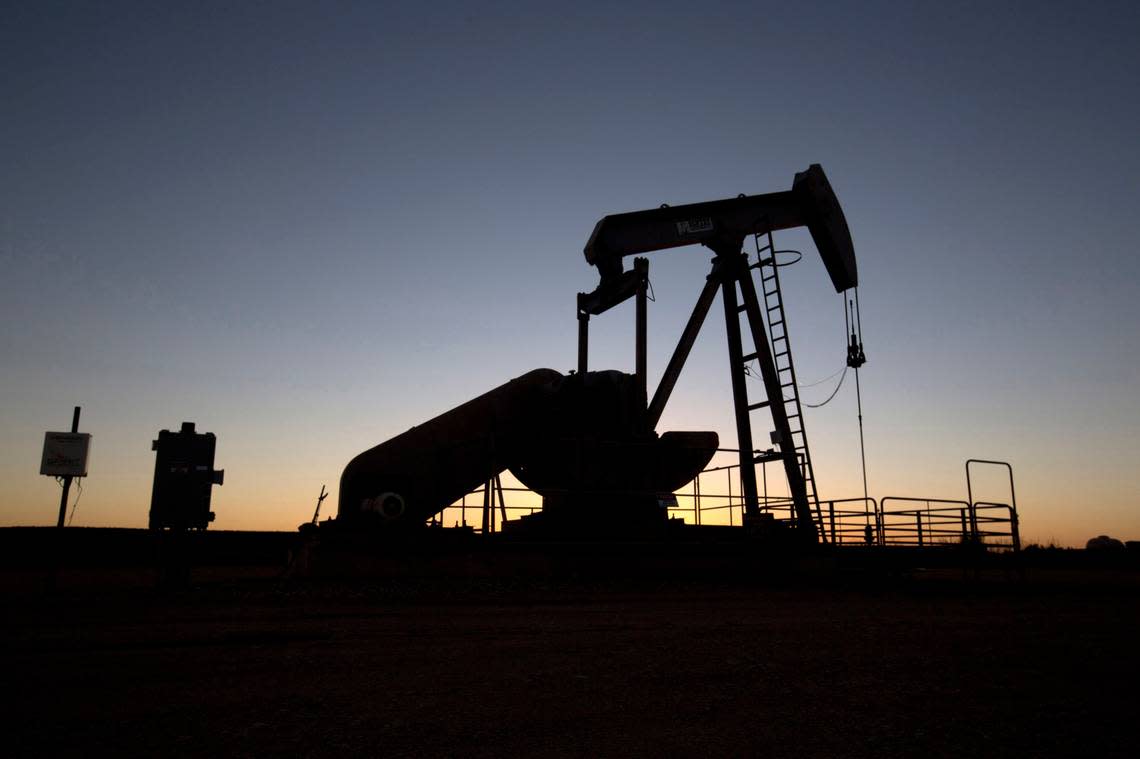How high will California gasoline prices climb this summer? Here’s your forecast

Are $5 a gallon gasoline prices returning this spring and summer? It’s possible.
Look for prices inching up over the next four to six weeks, said Sanjay Varshney, professor of finance at California State University, Sacramento.
The likelihood that the price will hit $5 a gallon for regular gasoline in California is 50-50, said Patrick De Haan, head of petroleum analysis at GasBuddy, which tracks prices.
“If there’s one or two refinery issues, California could get there,” he said.
They and others agreed, though, that at the moment, anything close to the record $6.44 for a gallon of regular gasoline in June, 2022, is highly unlikely.
“I don’t expect it to explode,” said Varshney of gasoline prices.
On Friday, AAA reported a gallon of regular gasoline in California cost an average of $4.87, about the same a week and a month ago.
Unpredictable gasoline prices
Whether the pump price reaches $5 this spring and summer in California depends largely on these variables:
▪ Crude oil prices. The price jumped to roughly $80 a barrel in early April, up roughly 10% to 15% from recent weeks. Driving the increase was the decision by the OPEC Plus oil producing nations, led by Saudi Arabia, to cut production.
“Prices at the pump generally follow crude oil prices very closely, and with a pretty short lag, just a few weeks Gasoline prices nationwide are already rising following the crude increase,’’ said Mark Finley, Fellow in Energy and Global Oil at the Center for Energy Studies at Rice University.
“So the bottom line for California gas prices to me would be: Follow crude prices and add any local factors,” he said.
Severin Borenstein, energy economist at the University of California, Berkeley, estimated that for every dollar of increase in crude oil prices, the price at the pump could go up about 2.5 cents a gallon.
▪ Domestic demand. “Gas demand is very robust,” said Andrew Gross, AAA spokesperson. People tend to drive more when the weather is good.
Demand, though, could be impacted by the path of the U.S. economy. The Federal Reserve has been trying to ease price increases by raising interest rates, which in turn tend to slow economic growth.
Ironically, said Varshney, gasoline prices are a contributing factor to a slowdown. If they rise sharply, that increases transportation costs, and helps boost the rate of inflation. That in turn could motivate the Fed to raise interest rates.
▪ Summer gasoline blend. Warmer weather fuel in California, designed to ease pollution in spring and summer, is usually more expensive than the winter product.
It’s also harder to get California gasoline should a state refinery shut down. The state is more vulnerable to lapses because it does not have the infrastructure needed to quickly bring large amounts of oil into California from other domestic sources
When unforeseen refinery outages occur, the need for California’s special blend of gasoline generally means the product has to come in other ways, such as foreign imports.
As a result, “It can take several weeks to find and bring replacement motor gasoline from overseas that meets California’s unique specifications,” the federal Energy Information Administration said last year in an analysis of California energy.
▪ China. “A lot is contingent on their economy. That’s certainly a wild card,” said De Haan.
Varshney was uncertain about the impact of demand in China.
“China is reopening now in a very strong way,” he said, but added “China is also getting oil from Russia directly,” which would not necessarily impact oil prices in this country.
He and others agreed on this much: While they don’t see huge increases in pump prices, the outlook is shaky.
“There are some fireworks that could happen,” said De Haan, ‘but so far we’ve dodged the bullets.”

